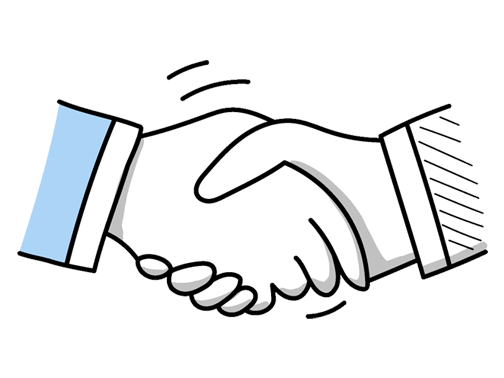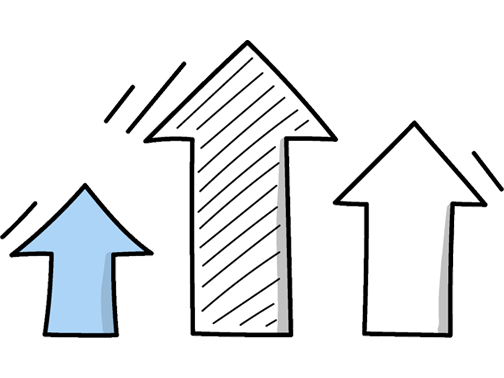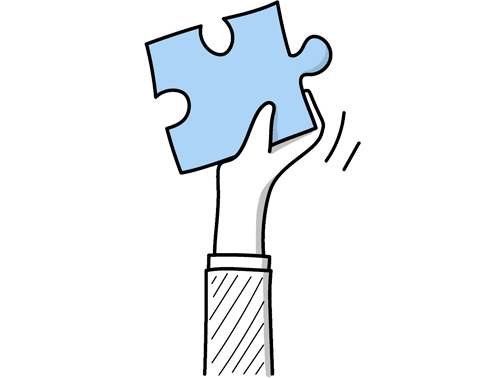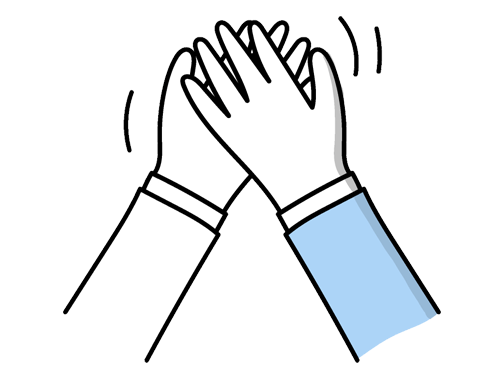Exhibition Director Interview Questions (2025 Guide)
Find out common Exhibition Director questions, how to answer, and tips for your next job interview
Practice Interviews Online - Identify your strengths and weakness in a realistic Exhibition Director mock interview, under 10 minutes
Practice Now »Exhibition Director Interview Questions
Employers ask this question to see how you handle challenges and make tough calls under pressure. You need to describe a specific situation, explain your decision-making process clearly, and highlight the positive outcome or what you learned.
Example: Certainly. Once, during an exhibition’s final week, we faced unexpected budget cuts. I had to decide whether to reduce programming or cut marketing efforts. After consulting the team, I chose to scale back on non-essential events while maintaining promotional activities to keep visitor numbers strong. It was tough, but prioritising audience engagement helped us finish the show successfully without compromising its quality.
This interview question aims to assess your problem-solving skills and ability to handle pressure in a dynamic exhibition environment. You need to clearly explain the specific challenge you faced, describe the practical steps you took to resolve it, and highlight the successful outcome or lesson learned.
Example: During a recent exhibition, a key speaker canceled last minute, threatening to disrupt the schedule. I quickly reassessed the agenda, secured a qualified substitute from our network, and adjusted the timing to keep the flow intact. This quick pivot maintained audience engagement and taught me the importance of flexibility and having backup plans ready for unexpected challenges.
Hiring managers ask this to assess your ability to build financial support essential for successful exhibitions. You need to explain how you research potential sponsors, tailor proposals to align with their interests, and maintain long-term relationships to secure ongoing funding.
Example: When securing funding, I focus on building genuine relationships with potential sponsors by understanding their goals and aligning them with the exhibition’s vision. I also highlight clear benefits, like audience reach and brand visibility, to demonstrate value. For example, during a recent show, I tailored proposals to match sponsors’ interests, which led to long-term partnerships rather than one-off support. It’s about collaboration and mutual gain.
This question assesses your ability to use market research to make informed strategic decisions. You need to explain how you gather and analyze visitor data to shape exhibition themes and identify opportunities that align with audience preferences and exhibition goals.
Example: Market research is key to shaping our exhibition strategy. By digging into audience preferences and industry trends, we tailor content and marketing to engage the right visitors. For example, understanding competitor events helps us identify gaps and unique angles. This insight ensures every decision, from theme to partnerships, aligns with our goals, ultimately driving attendance and delivering value to stakeholders.
This interview question aims to assess your ability to use clear and effective communication to manage conflicts, a crucial skill for an exhibition director who often coordinates diverse teams. You need to briefly describe the situation, explain how you listened and clarified misunderstandings, and highlight the positive outcome of your communication.
Example: In a previous role, a supplier misunderstood the exhibition timeline, risking delays. I calmly clarified expectations through a detailed conversation, then followed up with written confirmation. This clear communication eased tensions and realigned everyone’s efforts, ensuring the event proceeded smoothly. It showed me how listening carefully and addressing concerns directly can turn potential conflicts into productive solutions.
Employers ask this question to understand how you measure impact and ensure goals are met. You need to explain that you use specific metrics like visitor engagement, financial performance, and feedback, and regularly review these against the plan to adapt strategies as needed.
Example: I look at a mix of visitor engagement, feedback, and how well the exhibition met its set objectives. For example, tracking attendance numbers alongside visitor surveys helps gauge overall impact. I also consider media coverage and social media buzz, which show public interest. Lastly, I review how well the exhibition supported the organisation’s wider goals, like community involvement or educational outreach, to see if the strategic plan truly delivered.
This interview question helps assess your ability to measure and manage the financial health of an exhibition. You need to mention metrics like revenue, profit margin, budget variance, and return on investment to show you understand both income and cost control.
Example: When evaluating an exhibition’s success, I focus on profitability—balancing revenue from ticket sales, sponsorship, and exhibitor fees against costs. Attendance figures matter too, as they show engagement. I also look at metrics like average spend per visitor and lead generation for exhibitors. For example, a recent event with strong sponsorships but low footfall highlighted the need to better align marketing and audience targeting.
Employers ask this question to see if you can connect exhibitions to the bigger picture and lead projects that meet organizational goals. You need to explain how you identify the organization's mission, use research and audience insights to shape the exhibition plan, and continuously evaluate and adjust your strategy based on feedback and results.
Example: When planning an exhibition, I start by really understanding the organisation’s wider objectives to ensure everything we do supports those aims. From there, I map out clear stages—from concept through to delivery—keeping in close contact with teams to stay on track. I also keep a close eye on how it’s performing during and after the event, ready to tweak things if needed. For example, at my last show, shifting visitor engagement strategies mid-run helped us exceed attendance targets.
Employers ask this question to understand how you handle uncertainty and ensure successful outcomes despite limited data. You need to say that you quickly gather key input from your team, carefully weigh risks and benefits, and stay flexible to adjust decisions as new information arises.
Example: When faced with incomplete information, I focus on quickly pulling together whatever insights are available, then assess the potential impacts before deciding. I weigh the possible outcomes carefully but stay flexible, knowing new details often emerge. For example, during a past exhibition, we adjusted the layout last minute based on visitor flow data, which improved the overall experience without disrupting the schedule.
Employers ask this to see how you manage stress and keep your team motivated under tight deadlines. You need to explain that you set clear priorities, communicate openly, and support your team to maintain focus and productivity.
Example: In high-pressure moments, I stay calm and keep communication clear, ensuring everyone knows their priorities. I check in regularly to offer support and celebrate small wins to keep morale up. For example, during a last-minute exhibit change, staying steady and breaking tasks into manageable steps helped the team stay focused and deliver on time without burnout.
Employers ask this question to see how you manage relationships and keep everyone informed, ensuring the exhibition runs smoothly. You need to say you use regular updates, active listening, and tailored communication methods to keep stakeholders engaged and aligned.
Example: I focus on establishing open, regular dialogue from the start, tailoring updates to each stakeholder’s needs. For example, I set clear milestones and use collaborative tools to keep everyone aligned, ensuring questions are addressed promptly. This approach helps build trust and keeps the project moving smoothly, preventing misunderstandings before they arise.
This interview question helps assess your problem-solving skills and adaptability in managing complex exhibitions under pressure. You need to describe a specific situation where you quickly identified a challenge, adjusted the strategic plan effectively, and communicated clearly with your team and stakeholders to ensure a successful outcome.
Example: Certainly. During a past exhibition, a key shipment was delayed unexpectedly. I quickly reassessed the layout and programming, shifting focus to local artists to fill the gap. I kept my team and stakeholders informed throughout, fostering collaboration and maintaining morale. This flexible approach ensured the event still felt cohesive and engaging, despite the setback. It reinforced how staying calm and communicative is crucial when plans need to change.
Hiring managers ask this question to see how you manage team dynamics and resolve issues that could disrupt productivity. You should explain that you listen carefully to all sides, encourage open communication, and guide the team toward collaborative solutions that keep morale high and projects on track.
Example: When conflicts arise, I focus on listening carefully to everyone’s viewpoint to truly understand the issue. I encourage open dialogue, which often leads us to find common ground. For example, during a recent exhibition, by facilitating calm discussions, we resolved scheduling disagreements without affecting morale. It’s important to lead by example and keep the team’s spirit positive so we can continue working effectively together.
This interview question assesses how your leadership style fosters teamwork and drives successful exhibition outcomes. You should clearly describe your collaborative approach and give specific examples of how your leadership improved visitor engagement and overcame challenges during exhibit preparation.
Example: I lead by fostering collaboration and clear communication, ensuring everyone understands their role and feels valued. In a recent exhibition, when last-minute venue changes arose, I quickly coordinated the team to adapt logistics seamlessly, which kept the event on track and well-received. Being approachable and solution-focused helps me guide teams through challenges while maintaining a shared vision, ultimately delivering engaging, successful exhibitions.
This interview question aims to assess your ability to balance financial efficiency with maintaining high exhibition standards. In your answer, explain how you analyzed budgets to find savings, implemented cost-effective strategies that didn’t harm quality, and monitored results to ensure both cost and quality goals were achieved.
Example: In a previous role, I reviewed our supplier contracts and negotiated better rates without cutting corners on materials. We also optimized the layout to use space more efficiently, which reduced rental costs. Throughout, I kept a close eye on visitor feedback and engagement levels to ensure the experience stayed top-notch. This approach helped us meet budget goals while maintaining the exhibition’s high standards.
This interview question evaluates your ability to manage complex projects by balancing deadlines, resources, and stakeholder expectations. You need to explain how you create timelines prioritizing critical milestones, allocate team members according to skills and workload, and maintain clear communication with clients and partners to keep everyone aligned.
Example: When managing multiple exhibitions, I focus first on deadlines and the impact each event will have, then allocate resources accordingly to ensure nothing is stretched too thin. Regular check-ins with my team and stakeholders help keep everyone aligned and adapt priorities as needed. For example, during a recent project, shifting a key vendor’s schedule early on avoided last-minute delays and kept both exhibitions on track.
What they want to know is how you anticipate and address financial challenges to keep the exhibition on track without compromising quality. You need to explain how you identify potential overruns early, take practical steps to adjust spending or negotiate costs, and communicate transparently with your team and stakeholders to manage expectations.
Example: When budget issues arise, I first review the causes and explore where we can trim expenses without compromising quality. For example, during a past show, we negotiated better rates with suppliers and adjusted the layout to reduce setup costs. I keep stakeholders informed throughout, so everyone understands the trade-offs and supports the revised plan. Staying transparent and adaptable helps us deliver a successful exhibition within revised financial limits.
This question assesses your ability to accept and use feedback effectively to improve the exhibition. You need to say that you listen carefully to stakeholders, analyze their feedback in terms of exhibition goals, and work collaboratively to implement constructive changes or explain your decisions clearly.
Example: I welcome feedback from all stakeholders as it often offers fresh perspectives. When I receive comments, I take time to consider the underlying concerns and assess how they align with the exhibition’s goals. For example, if a sponsor feels the messaging isn’t clear, I’ll review the content and work with the team to refine it. I find being transparent about what changes are possible helps maintain trust and keeps everyone engaged.
What they want to understand is how you foster collaboration and ensure your team feels valued in the planning process. You need to say that you actively gather input through brainstorming and open discussions, then clearly communicate decisions with the reasons behind them to keep everyone informed and engaged.
Example: When planning an exhibition, I make it a point to bring the team together early on to hear their ideas and perspectives. This way, their unique expertise shapes the project from the start. Throughout, I keep communication open, explaining why certain choices are made so everyone feels aligned and valued. For example, in my last show, input from both designers and marketing helped us create a more engaging visitor experience.
Hiring managers ask this question to see how you keep your team focused and informed, which is crucial for smooth exhibition execution. You need to say you use regular meetings and clear communication channels to share updates, encourage open feedback to foster collaboration, and address potential issues early to keep everyone aligned.
Example: To keep my team aligned, I rely on regular check-ins and open communication, ensuring everyone understands our objectives and progress. I encourage input from all members to build a sense of shared ownership and address challenges early. For example, in past exhibitions, quick huddles helped us adapt plans smoothly when last-minute changes arose, keeping the whole team informed and motivated throughout.
What they want to understand is how you measure success and learn from outcomes to improve future exhibitions. You should say you review visitor feedback, attendance numbers, and stakeholder satisfaction to assess impact, then use these insights to refine your decision-making.
Example: After each exhibition, I review attendee feedback, sales impact, and team reflections to see what worked and what didn’t. For example, if foot traffic was lower than expected, I’d look at layout or marketing tweaks. It’s about balancing data with real-world observations to learn and adjust, ensuring each event builds on the last in terms of engagement and success.
Interviewers ask this question to assess your problem-solving skills and creativity under pressure. You need to clearly describe the logistical challenge you faced, explain the innovative solution you applied, and highlight how it ensured the success of the exhibition.
Example: During a recent exhibition in a historic venue with limited loading access, we faced delays unloading key pieces. To tackle this, I coordinated with local suppliers to use compact, modular displays that could be assembled onsite, reducing transport complexity. This not only kept us on schedule but also enhanced the visitor experience with flexible, interactive setups, proving that adaptability can turn challenges into unique opportunities.
Questions like this assess your leadership and communication skills in managing diverse groups to achieve a common goal. You need to explain how you inspire your team with a clear vision and adapt your communication to different personalities while setting clear goals that keep everyone aligned and motivated.
Example: I focus on understanding each team member’s strengths and motivations, creating an environment where everyone feels valued. By encouraging open communication and setting clear, shared goals, I help the team stay aligned and engaged. For example, in a past exhibition, I facilitated regular check-ins that allowed us to adapt quickly and celebrate small wins, keeping morale high and delivering a smooth, successful event.
This interview question helps assess your ability to adapt communication to different audiences, ensuring smooth collaboration and successful event outcomes. You need to explain how you adjust your language and approach based on each stakeholder’s background and needs, and give examples of methods you use to maintain clear, respectful, and effective dialogue.
Example: When I work with artists, I focus on understanding their creative vision and speak in a way that respects their process. With vendors, I’m straightforward and detail-oriented to keep things running smoothly. Sponsors appreciate clear updates and demonstrating value, so I tailor my approach to highlight how their support makes an impact. Adapting my style helps me build trust and ensures everyone feels heard and valued.
This question assesses your ability to plan and control financial resources effectively for a successful exhibition. You need to explain how you create a detailed budget including venue, materials, and staffing costs, regularly monitor expenses, and communicate with stakeholders to manage expectations and make adjustments.
Example: When developing a budget for an exhibition, I start by breaking down all expected costs, from venue to marketing, ensuring nothing is missed. Throughout the planning process, I regularly review expenses to stay on track and adjust where needed. I also keep close communication with stakeholders to make sure everyone’s goals and financial limits are clear, which helps avoid surprises and keeps the project moving smoothly.
Ace your next Exhibition Director interview with even more questions and answers
Common Interview Questions To Expect
The interviewer is looking for your motivation, passion, and understanding of the role. You can answer by discussing your relevant skills, experience, and how the role aligns with your career goals.
Example: I am interested in this role because I have a strong background in event planning and project management, which are essential skills for an Exhibition Director. I am passionate about creating engaging and impactful experiences for attendees, and I believe this role will allow me to further develop my expertise in the events industry. Additionally, I see this position as a great opportunity to contribute to the success of the company and grow professionally in a dynamic and creative environment.
The interviewer is looking for a candidate who has done their research on the company, understands its values, goals, and products/services. Answers should demonstrate knowledge and interest in the company's industry and position within it.
Example: I know that your company is a leading provider of innovative exhibition solutions in the UK. I've seen that you specialize in creating immersive experiences for various industries, from technology to fashion. I'm excited about the opportunity to contribute my expertise as an Exhibition Director to help further elevate your brand in the market.
Interviewers are looking for honesty, professionalism, and a positive attitude in your response. You can mention career growth, seeking new challenges, company restructuring, or personal reasons for leaving your last job.
Example: I left my last job because I felt like I had reached a plateau in my career and was looking for new challenges and opportunities to grow. The company was also going through a restructuring process which made me reassess my career goals. Overall, I am excited about the potential for growth and development in this new role as Exhibition Director.
The interviewer is looking for examples of how you manage stress and stay focused under pressure. Be sure to provide specific examples of your strategies and techniques for handling stressful situations effectively.
Example: I handle pressure by prioritizing tasks, staying organized, and taking breaks when needed to stay focused. For example, I create a detailed schedule to ensure all deadlines are met and communicate openly with my team to delegate tasks effectively. Additionally, I practice mindfulness techniques such as deep breathing to stay calm and collected during high-pressure situations.
The interviewer is looking for examples of how you collaborate with others, communicate effectively, resolve conflicts, and contribute to team success. Be specific and provide relevant examples from your past experiences.
Example: Sure! In my previous role as an Exhibition Director, I worked closely with a team of designers, marketers, and vendors to successfully plan and execute large-scale events. I communicated regularly with team members to ensure everyone was on the same page and addressed any conflicts that arose in a professional manner. By working collaboratively, we were able to deliver high-quality exhibitions that exceeded our clients' expectations.
Company Research Tips
The company's official website is a goldmine of information. Look for details about the company's history, mission, vision, and values. Pay special attention to any information about their exhibitions, such as their scale, frequency, and themes. This will give you a sense of the company's culture and priorities, which can help you tailor your responses during the interview.
Tip: Don't just stick to the 'About Us' page. Explore the entire website, including blogs, news, and event sections.
Social media platforms can provide a wealth of information about a company's activities, including their exhibitions. Look at their posts, comments, and reviews to get a sense of how they interact with their audience and what their audience thinks of them. This can give you insights into their brand image and reputation, which can be useful in the interview.
Tip: Look at the company's LinkedIn, Facebook, Twitter, and Instagram pages. Also, check if they have a YouTube channel where they might post videos of their exhibitions.
Industry news and reports can give you a broader context of the company's operations. Look for information about trends in the exhibition industry, as well as any news or reports about the company itself. This can help you understand the challenges and opportunities the company is facing, which can be useful in the interview.
Tip: Use online databases like Google Scholar, JSTOR, and industry-specific databases. Also, check industry blogs, magazines, and news websites.
Understanding the company's competitors can give you insights into its strategic position. Look at the competitors' exhibitions, their scale, themes, and frequency. Compare these with the company's exhibitions to identify any unique selling points or areas for improvement. This can help you provide more informed responses during the interview.
Tip: Use tools like Google, LinkedIn, and industry-specific databases to identify and research competitors.
What to wear to an Exhibition Director interview
- Dark-colored business suit
- White or light-colored dress shirt
- Conservative tie
- Polished dress shoes
- Minimal and professional accessories
- Neat and professional hairstyle
- Light and natural makeup for women
- Clean and trimmed nails
- Avoid flashy jewelry
- Ensure clothes are ironed and clean





